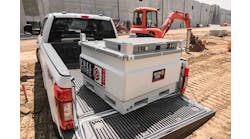Dodge Momentum Index, ISM, Beige Book Send Mixed Signals about Economy
The Dodge Momentum Index slipped 1 percent in August from a downwardly revised July reading but jumped 17 percent year-over-year, Dodge Construction Network reported recently. The index “is a monthly measure of the initial report for nonresidential building projects in planning,” shown to lead construction spending for nonresidential buildings by a full year. In August, the commercial component of the Momentum Index rose 1 percent, while the institutional component fell 5.6 percent. Commercial planning in August was led by an increase in hotel projects, while fewer healthcare projects drove the institutional component lower. Compared to August 2021, the Momentum Index was up 14 percent, with the commercial component up 16 percent, and the institutional component up 10 percent.
”Economic activity in the services sector grew in August for the 27th month in a row,” the Institute for Supply Management reported. One construction respondent said, “Some pullback on projects by clients, but activity is still strong for our company. This has alleviated some labor availability issues. Generally, there has been improvement in lead times and prices, but still longer and higher, respectively, than in 2021.”
Another respondent noted, “Activity is up due to material receipts that have allowed us to schedule and work more projects than last month.”
Construction is among the 17 sectors (out of 18) that reported paying higher prices for materials and services, slower supplier deliveries (12 sectors), and increased business activity (11) and employment (8) but is among those reporting no change in new orders ( five sectors) and order backlogs (seven). Items significant for construction reported up in price include diesel fuel (21 months in a row but also reported down in price), construction labor, personal protective equipment, and steel products (20 months but also reported down). Aluminum products also are listed as down in price (for the second consecutive month). Items listed in short supply include construction labor and fiberglass door slabs.
“Economic activity was unchanged, on balance, since early July, with five districts reporting slight to modest growth in activity and five others reporting slight to modest softening,” the Federal Reserve reported in the latest “Beige Book,” which summarizes informal soundings of businesses through August 29. “Despite some reports of strong leasing activity, residential real estate conditions weakened noticeably as home sales fell in all 12 districts and residential construction remained constrained by input shortages. Commercial real estate activity softened, particularly demand for office space. Overall labor market conditions remained tight, although nearly all districts highlighted some improvement in labor activity, particularly among manufacturing, construction, and financial services contacts. While manufacturing and construction input costs remained elevated, lower fuel prices and cooling overall demand alleviated cost pressures, especially freight shipping rates. Several districts reported some tapering in prices for steel, lumber, and copper.”
The Bureau of Labor Statistics issued its annual projections of 10-year employment change, covering 2021-2031. The agency projects construction industry employment to increase by 205,000 or an annual average of 0.3 percent per year, below the 0.5 percent growth rate for total nonfarm payroll employment. Growth among construction managers (whether employed in construction or other sectors) is projected to total 36,000 or 7.6 percent over 10 years. But retirements and departures mean there will be an annual average of 41,500 openings. Growth among all construction trades occupations is projected to total 196,000 (3.6 percent) over 10 years, with an average of 550,000 openings per year. Laborers are projected to have the largest 10-year numerical increase, 72,000 (5.3 percent). The largest projected percentage increase, 27 percent, is for solar photovoltaic installers, but this would be an addition of only 4,600 jobs.
The outlook for warehouse construction has dimmed. Amazon has closed 15 buildings and canceled 25 projects, including 10 large fulfillment centers, “according to MWPVL data,” the Wall Street Journal reported. “‘The pullback in online sales demand and broader signs of an economic slowdown have many companies reassessing their logistics footprints,’ said Jason Tolliver, executive managing director of logistics and industrial for commercial real-estate services firm Cushman & Wakefield.”In a roundup of recent data center construction news, the e-newsletter Data Center Frontier reported on August 31, “Just days after breaking ground on a $2.5 billion campus in suburban Chicago, developer CloudHQ has advanced plans for a $1 billion data center project in Chaska, Minnesota. Amazon Web Services [is] seeking to rezone 60 acres of land in Bristow, Virginia with plans to build a 900,000-square-foot data center project, according to local media reports….Microsoft plans another data center in San Antonio, according to a recent filing with the Texas Department of Licensing and Regulation. Skybox and Prologis have purchased more than 220 acres from the City of Hutto in northeast Austin, where they plan to build a data center campus, according to Data Center Dynamics. [They] are currently building a data center in Pflugerville, just north of Austin.”
In 2021, “approximately 1percent of multi-family buildings (properties, not units) were built using modular and panelized methods,” the National Association of Home Builders reported in an “Eye on Housing” blog post analyzing the Census Bureau’s Census of Construction data. “Similarly to single-family construction, this market share was expected to grow, but the expected gains did not materialize due to various constraints in the industry. In 2000 and 2011, 5 percent of multifamily buildings were constructed with modular (1percent) or panelized construction methods (4 percent).”






